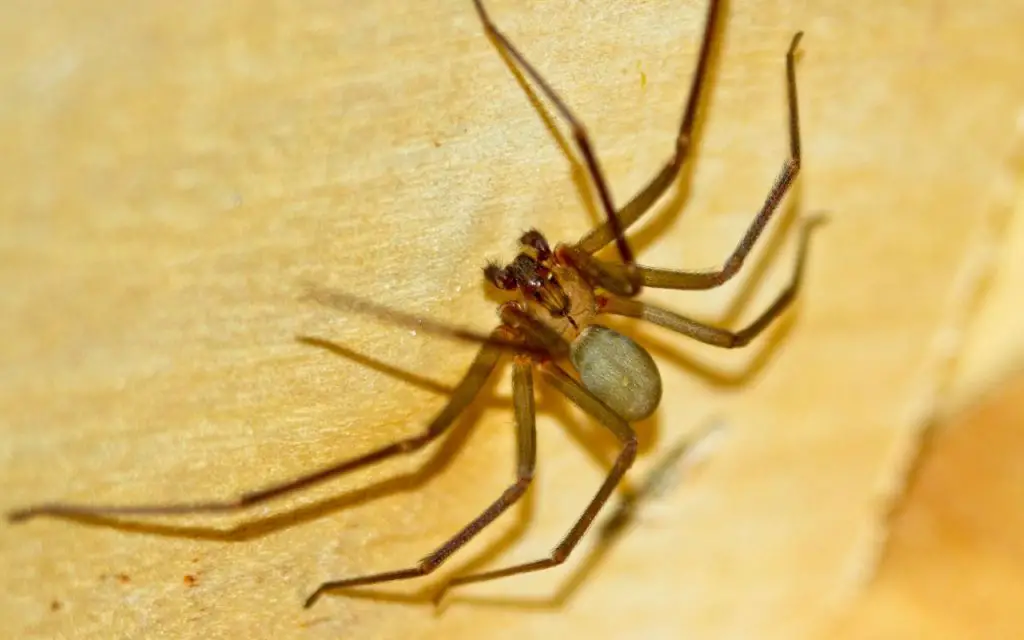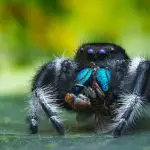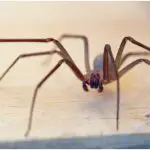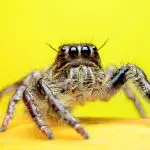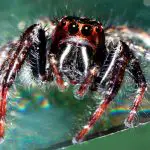Last updated on July 3rd, 2023 at 02:44 pm
A lot of spiders mistaken for Brown Recluse are in fact harmless. Keep reading to learn more about these common lookalikes…
It’s quite common for people to confuse the Brown Recluse with the Huntsman Spider, or the Hobo Spider, and vice versa. This article will explain how to identify these common spiders and what differentiates them from the Brown Recluse. You can also learn about the differences between the brown recluse and the wolf spider. Read on to learn more!
Huntsman Spiders
Although not a seriously venomous spider, Huntsman Spiders can cause fear in people unfamiliar with them. These spiders are commonly mistaken for Brown Recluses and sadly get killed for it.
To determine whether you have a huntsman spider, look at its appearance. This species is large, flat and has an elongated body with a brown, larg-ish abdomen. In addition to that, Huntsman spiders generally have thicker legs than Brown Recluses.
The most common type of Huntsman in the US is an introduced species, Heteropoda venatoria, which many people commonly call the Banana Spider. This is because it is thought to have come in on shipments of bananas. So far, it seems to have established itself in California, Texas, Florida and perhaps other southeastern states.
How Huntsman spiders differ from Brown Recluses:
- flatter profile
- forward facing, crab-like legs
- darker overall colouration
- no fiddle marking on back
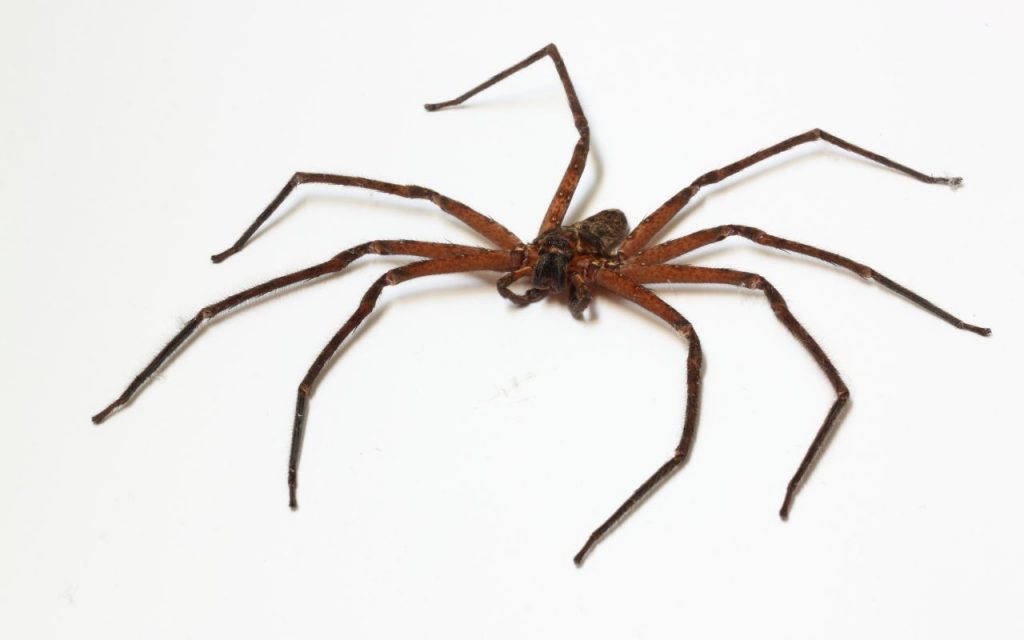
Hobo Spider
If you’re unsure of the difference between a brown recluse and a hobo spider, there’s no need to worry. These two spiders are similar in appearance, although their colorings differ slightly.
Hobo spiders have a reddish-brown coloration, while the brown recluse has a brown coloration and chevron-patterned abdomen. Although they look similar, the difference in appearance is noticeable when examining their webs.
While both species can be easily confused, the two species are completely different, though they both can be found in secluded areas. Female hobo spiders are approximately 11mm long, while male hobo spiders are slightly smaller.
The male has a black line across the abdomen and two large enlarged palps near its mouth. Hobo spiders often hide in dark, secluded areas where they can’t be spotted.
Because hobo spiders are so similar to Brown Recluse spiders, they often mistakenly appear to be one and the same. While hobo spiders do have similar morphology and appearance, the venom in their bites is much less dangerous. That said, their venom can cause pain and irritation.
How Hobo spiders differ from Brown Recluses:
- darker legs
- no fiddle marking on back
- patterning on abdomen
It’s also important to remember that Brown Recluse Spiders do not live in Oregon or Washington State.
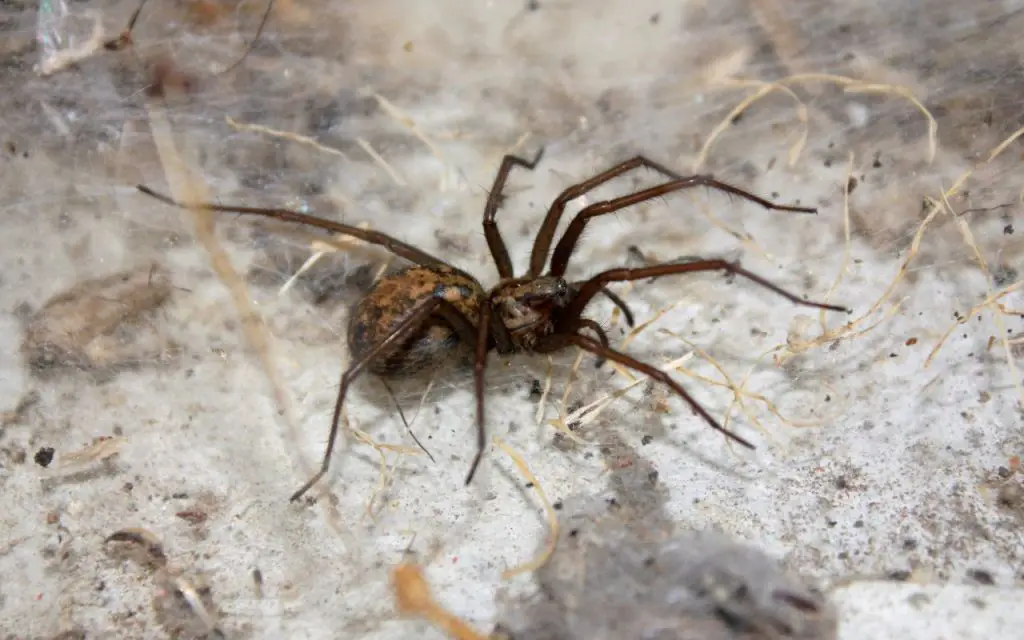
Cellar Spiders
If you see a cellar spider, you may think you’re dealing with a Brown Recluse. This arachnid is a Mediterranean immigrant that first appeared in California around 1995.
Cellar spiders are large, and also have a marking on their back that looks like a violin. But they’re actually not dangerous. Generally, they very frightened of humans, and bites are almost unheard of.
The marking on the cephalothorax of a brown recluse spider is where it gets the “fiddleback” nickname from. While it’s a common mistake, this marking doesn’t always indicate that it’s a brown recluse.
Many species of spider have a similar marking, and the Cellar Spider happens to be one of them, despite being completely harmless. Cellar spiders have long legs and a slender abdomen, and are best spotted indoors, where they hang out in disorganized webs.
These spiders are typically associated with a web and have long legs. It is very uncommon to see them wandering around, and they spend almost their whole lives suspended in their web, generally in a dark corner.
How Cellar Spiders differ from Brown Recluses:
- longer, thinner legs
- are almost always seen sitting in their web – not wandering around
- hang upside down in their web, not upright
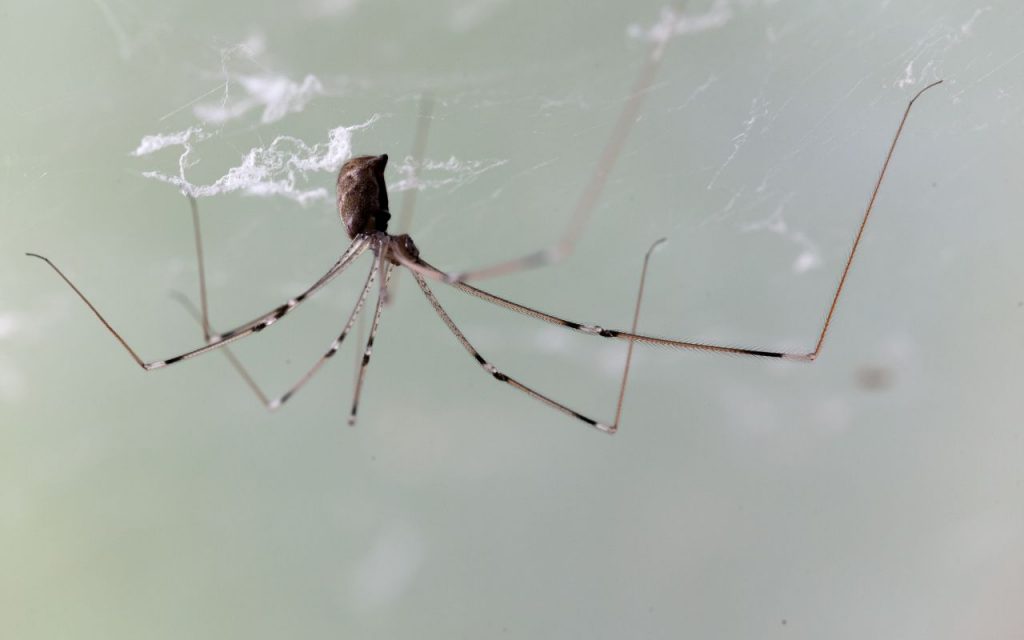
Brown Recluse vs Wolf Spider
While both spiders are good insect predators, there are a few differences between Brown Recluses and Wolf Spiders.
Recluse Spiders are highly active at night, and the male brown recluse is more likely to roam around when compared to the female. Many Wolf Spiders, on the other hand, are active during the day, being visual hunters.
Another difference is that the Brown Recluse builds webs. These aren’t for catching prey, but instead they are for resting in and staying safe during the day.
Wolf Spiders do not build webs, and spend their time actively foraging on open ground. For safety, many species build a burrow in the ground.
The Brown Recluse spider lives in the southeastern United States, ranging from Texas to Georgia, Tennessee, and Kentucky. These spiders are typically light brown with a distinctive violin pattern on the neck.
Conversely, Wolf Spiders are found accross the same range, but also much further north. You can easily find Wolf Spiders in parts of Canada for example, where Brown Recluses are never encountered.
Brown Recluses are often found in attics, basements, and closets. While they don’t usually bite humans, they are still capable of frightening people. The Wolf Spider will usually only come inside if the weather’s getting cold, and this means you will most likely spot it on the ground floor.
How Wolf Spiders differ from Brown Recluses:
- found on open ground or at the entrance to a burrow, not in a web
- stockier legs and body
- look like they could snap a Recluse in two!
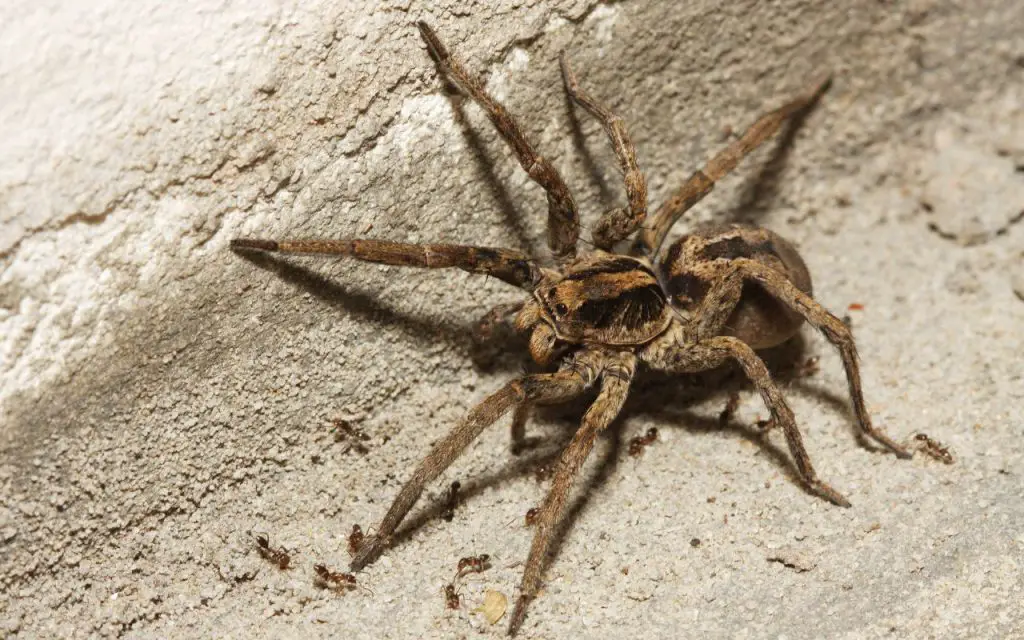
Brown Recluse identification
There are many brown spiders that can be mistaken for the Brown Recluse. These spiders live in loose piles of debris outside. Sometimes they may be found in furniture or clothing. Many bite victims put on clothing that was left on the floor.
While they are not aggressive, they do carry venom that certain individuals react badly to. Most people have a very minor reaction, while a small percentage develope painful lesions and systemic symptoms. At this point, no one really knows why.
Identifying a brown recluse spider can be tricky if you don’t know how to tell them apart. Their violin shape is not easy to recognize because so many spiders have similar shapes. Another way to tell them apart is by their color.
Brown recluse spiders are lightish-brown or tan in color, whereas other spiders in the same range are generally much darker overall. the best way to identify Brown recluses is to learn about all the spiders in your area. Knowing how to identify other species will make it easier to identify the recluse by process of elimination.
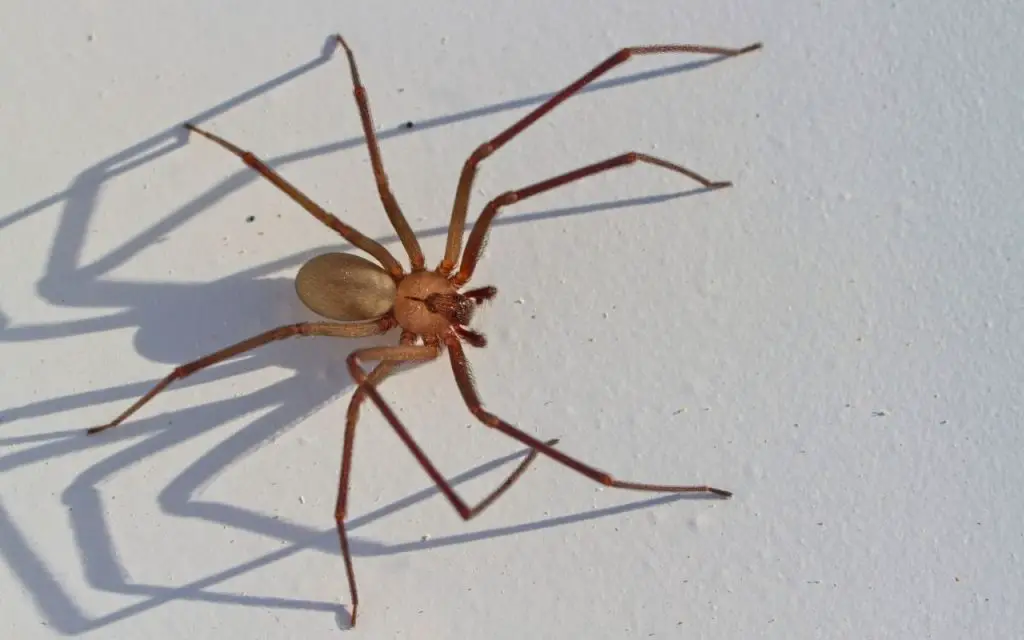
Brown Recluse size
In general, this species reaches about 1 to 1.5 inches in legspan. This makes it an average sized spider in most parts of its range. It is reasonably slim-legged, but not spindly like the Cellar Spider.
Nor is it ever stocky and heavily built like the Carolina Wolf Spider, with which it shares parts of its range. Baby Recluses are tiny and almost transparent, making them extremely difficult to identify.
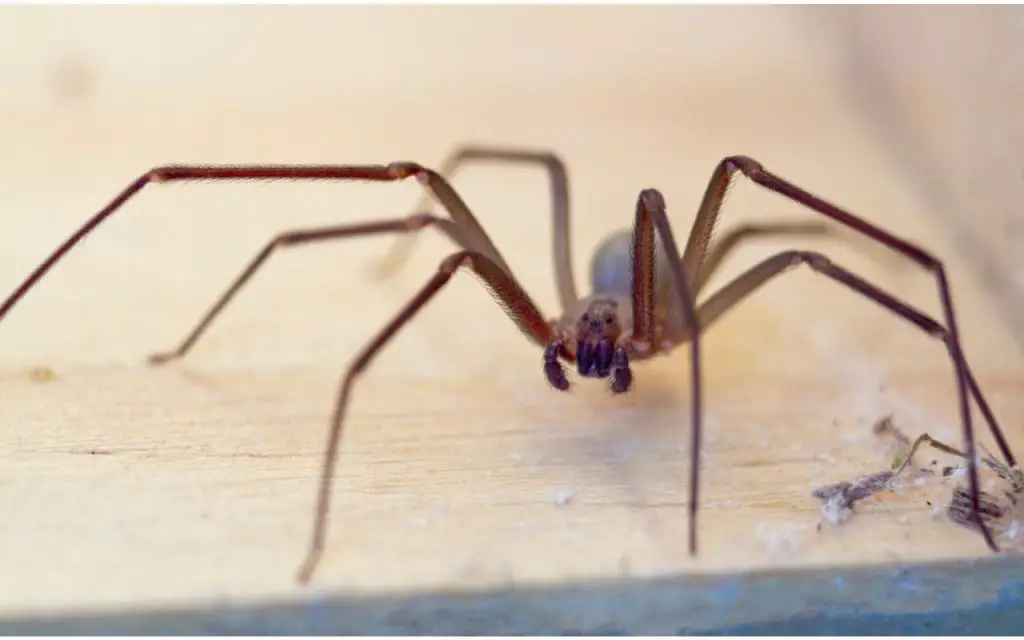
Brown Recluse bite
A brown recluse spider’s appearance can confuse many people. They have long legs and a violin-like marking on their backs. Brown recluses are not large, so you might be surprised at how small and inoffensive they look in real life.
The spiders are shyer than many species, so they will not bite you unless they are caught in your clothing. Nonetheless, those bites can be medically significant when they occur.
Most bites are relatively unimpressive. A rash, pain and swelling are common. Others, however, develope into an open sore, which may or may not be caused by bacteria transmitted through the puncture wound. Finally, on rare occasions, some bites produced severe malaise, including nausea, sweating and vomiting.
If you suspect you have been bitten by a Brown Recluse, always play it safe and call a doctor. In some cases, other infections and health concerns can look like a bite from this spider, so it’s in your interest to consult someone either way.

